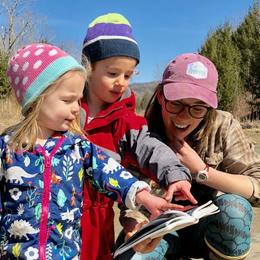eBird is a free way to track birds while birding managed by the Cornell Lab of Ornithology. It is a powerful data collection tool that allows people from around the world to upload photos, sounds, and observations. It is a tool that is used in real data for research that help inform better conservation strategies. Anyone has access to a wide to these data sets and it can help influence biologists around the world, not to mention your next birding hot spot! Anyone, anywhere around the world can find birding hot spots and it helps you become a better birder by honing your observations. If you do not have a smartphone you can submit your data online from your notes while birding. If you are looking for some eBird history check out this article from Audubon.
A quick how-to-use overview:
- Download the eBird application on your phone.
- Or take notes while birding!
- Install a ‘bird pack’ of birds in the region you are birding.
- This allows you to see a bird list in your region without a connection.
- The app will suggest a bird pack best suited to your area
- Start a checklist, if you are backtracking from another time adjust the time accordingly.
- The app will pull up a list of birds that are in your pack.
- It will record your time, route, and your mileage as you go.
- Add birds by searching them in the search bar.
- Click the + button as the species you see pops up, press until you’ve reached the number observed.
- You can add behaviors you’ve seen the birds partaking in. Such as ‘carrying nest material’.
- Once you have finished birding press REVIEW.
- The information you’ve recorded will pop up for you to edit and review.
- You will also be asked to post your location, as well as the type of birding you were doing. Such as casual, or stationary.
- It asks ‘if this is a complete checklist’ of the birds you were able to identify. If you identified all the birds you saw while birding say ‘yes’ if you think you might have missed some say ‘no’.
- It gives you a chance to double-check your time, mileage, and such.
- In the list description, you can make a note of Audubon Vermont Birdathon 2020, #birdathonvt.
- Submit your list!
- For our 2020 Virtual Birdathon put your eBird list link into space when submitting your Birdathon results!
A scientist will review your submissions. If you have any outstanding observations they may reach out to you to ask for a photograph or point something out to you! Please visit the eBird Getting Started Page for more information as well as the eBird help page if you need help troubleshooting.
Nathaniel Sharp from the Vermont Center for Ecostudies hosted a webinar detailing how to use eBird. This video gives you a detailed look at how to submit observations, as well as an insight into all the cool capabilities, and ways you can hone and use eBird. Check out the video below!
Join VCE data technician and avid birder Nathaniel Sharp for a walkthrough of Vermont eBird with a focus on backyard birding!
Happy Birding!




